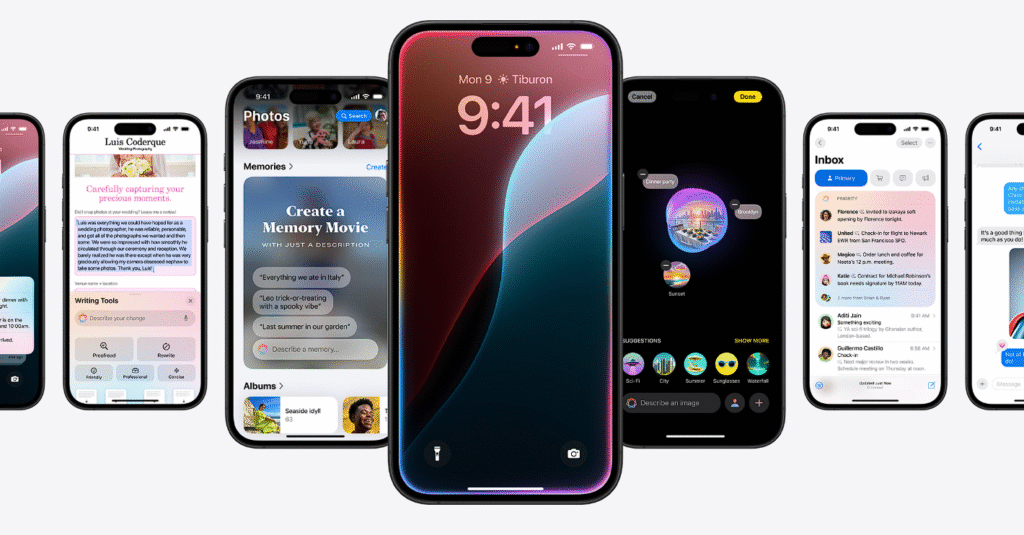As June approaches, the eyes of the tech world are once again locked on Cupertino, California, where Apple’s annual Worldwide Developers Conference ( WWDC 2025 ) is set to unfold from June 9 through June 13, 2025. Anticipation is mounting. Not just the kind that bubbles in developer circles or ripples through social media, but a broader sense of curiosity about what Apple—famously secretive and meticulously choreographed—has in store this time. While the company traditionally waits until Tim Cook walks onstage to unveil its cards, an ever-growing body of informed speculation, whispers from insiders, and strategically timed leaks are already painting a vivid picture of what might be coming.
WWDC 2025 Is Going To Be Different

This year’s keynote, streaming live on June 9 at 10 a.m. PT, is expected to be more than just a software showcase. Apple appears poised to make significant shifts in the look, feel, and intelligence of its operating systems. Central to that change is what many are calling the “Solarium” project—a design overhaul that aims to bring a cohesive visual experience across Apple’s device ecosystem. Solarium is reportedly drawing from the futuristic interface style introduced with visionOS, the operating system that powers Apple’s Vision Pro headset. This means more depth layering, refined translucency, and a heightened sense of spatial design. Unlike past updates that focused on individual platforms, this move could harmonize user experiences across iOS, macOS, iPadOS, watchOS, tvOS, and even visionOS itself. The result? A UI that doesn’t just look elegant but feels unified—like it was built from the same DNA, finally.
Change In the Software Naming Convention
Adding another layer to this year’s anticipated changes is a shift in how Apple names its software versions. Instead of traditional sequential numbering like iOS 18 or macOS 15, the company is rumored to adopt a year-based convention, resulting in versions like iOS 26 and macOS 26. This aligns more naturally with release timelines, but it also hints at a company more invested in clarity, consistency, and perhaps even long-term support planning.
Developers, the lifeblood of the Apple ecosystem, are likely to be treated to a range of new tools designed to bring AI capabilities into third-party apps more easily. Though Apple has historically operated a tight ship in terms of ecosystem openness, there are signs the company may allow slightly more flexibility. Updated SDKs, improved documentation, and enhanced machine learning APIs are expected, as well as a heavy emphasis on hands-on labs and workshops during the conference week. These changes aim to reduce friction in building intelligent, responsive apps while still operating within Apple’s strict security and privacy frameworks.
There’s also talk of a new, consolidated gaming app—an unexpected twist that could be a quiet star of the show. This rumored platform would blend the functions of Game Center and Apple Arcade, providing a streamlined hub for achievements, multiplayer sessions, friend connections, and exclusive content. Apple’s renewed interest in gaming could signal a bigger push into the space, particularly as mobile gaming eclipses other platforms in revenue and reach. For developers, this opens new doors for visibility and engagement, while for users, it could finally make Apple’s gaming services feel more intentional and enjoyable.
Improved Apple Intelligence
But beyond aesthetics and naming, it’s the intelligence layer that might steal the spotlight. Apple has long been considered conservative in its approach to AI, often criticized for falling behind peers like Google and OpenAI. This year, however, insiders believe Apple is preparing to showcase meaningful strides with what it’s reportedly branding as “Apple Intelligence.” While a complete Siri overhaul may be off the table until 2026, improvements are expected in how Siri understands natural language, responds with context awareness, and integrates subtly into the broader ecosystem. Think smarter photo sorting, more intuitive search, power-efficient optimization, and timely, relevant suggestions—all handled locally, in keeping with Apple’s privacy-first ethos.
Health remains another significant thread in Apple’s broader strategy. While the Apple Watch continues to lead in fitness tracking, WWDC 2025 is expected to introduce features that expand on that foundation. A new AI-powered coaching assistant may soon offer tailored advice and motivational insights, tying together data from activity rings, heart rate monitors, and even mental health metrics. There’s also speculation around Apple Translate getting a real-time upgrade through AirPods, offering instant interpretation for conversations on the go. These features not only elevate the utility of Apple’s devices but also deepen the company’s stake in the growing wellness tech space.
Despite the weighty expectations, some industry voices suggest this year’s WWDC might be more subdued in terms of headline-grabbing hardware announcements. While many have speculated about the debut of a second-generation Vision Pro or radical updates to the device, most signs point to Apple playing a longer game. Instead of immediate hardware releases, the company could be laying groundwork for future devices—quietly refining visionOS and its applications in preparation for a broader rollout down the line.
You May Like This: Microsoft’s Bing Video Creator Is Now Powered by OpenAI’s Sora — And It’s Free
At its core, WWDC 2025 seems to signal a transition—one that isn’t just about annual updates, but about rethinking how software should feel, how intelligence should work, and how devices should interact with us and with each other. Even if Apple opts for refinement over reinvention, the themes emerging—unified design, purposeful intelligence, and user-centric health and gaming experiences—paint a picture of a company that’s deeply aware of its role in shaping the next generation of computing.
So as developers prepare their laptops and analysts ready their hot takes, one thing is clear: WWDC 2025 may not deliver fireworks, but it’s likely to light the path ahead. The decisions made in Cupertino this June will ripple far beyond the keynote, influencing everything from app development to consumer expectations for years to come.




One thought on “WWDC 2025 Leaks: Apple’s Biggest Redesign in Years, AI Overhaul, and a Game-Changing Surprise”